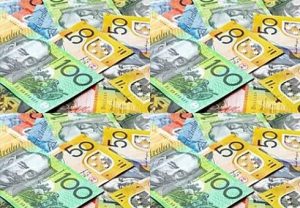Australian Dollar struggles to hold ground
16 November 2016 by News DeskAustralian Dollar rates held their ground due to lingering risk-demand from Monday.
 Australian Dollar trade was given a boost by factors such as strong prices of iron ore (Australia’s biggest commodity export) as well as news that the Reserve Bank of Australia had taken an optimistic neutral stance in its latest meeting minutes, according to currency specialists TorFX
Australian Dollar trade was given a boost by factors such as strong prices of iron ore (Australia’s biggest commodity export) as well as news that the Reserve Bank of Australia had taken an optimistic neutral stance in its latest meeting minutes, according to currency specialists TorFX
However, with worries about an upcoming Donald Trump US Presidency as well as uncertainty surrounding Australia’s job market, the Australian Dollar has struggled to hold its ground.
New Zealand Dollar (NZD) – The Pound to New Zealand Dollar exchange rate slipped on Tuesday as various domestic factors weighed on the Pound. However, its losses against the ‘Kiwi’ were limited by New Zealand market anxiety.
With New Zealand still reeling from a magnitude 7.8 earthquake earlier in the week, NZ market movement was jittery. This allowed Sterling to recover more quickly from Tuesday’s fall despite the ‘Kiwi’ also being supported by another increase in dairy prices from the Global Dairy Trade (GDT) Auction.
Australian Dollar struggles to hold ground
Pound Sterling (GBP) – The Pound saw its first poor trade day in over a week on Tuesday, being undermined by various factors throughout the day.
Perhaps the most damning news for Sterling was a memo reportedly leaked from the UK government. The memo suggested that there was still no single concrete plan for how the UK was to leave the EU after Article 50 is activated in March, sending anxiety throughout the foreign exchange market.
Downing Street officials claimed they did not recognise the document after it had been published by The Times, but analysts argued that regardless of legitimacy it was significant for indicating that there was still no consensus on what exactly the Brexit should be.
Despite this and a disappointing October inflation rate, the Pound was able to recover from its worst levels by Tuesday night and trended with a solid upward bias on Wednesday morning.
US Dollar (USD) – The Pound to US Dollar exchange rate was pushed down to its worst levels in almost a week on Tuesday. The bullishness of the US Dollar easily took down the Pound amid refreshed Brexit worries, erasing all of last week’s GBP/USD gains. While Sterling recovered slightly from its selloff on Tuesday night and Wednesday morning, the US Dollar remained strong enough to limit Sterling’s advances.
Markets became especially bullish on the US Dollar after American markets opened on Tuesday and US traders reacted to October’s US retail sales scores, which came in well above expectations. The month-on-month score beat expectations of 0.6% by scoring 0.8%, while September’s figure was revised higher from 0.6% to 1.0%. While this led to an increase in Federal Reserve rate hike bets, analysts warned that poorly timed monetary tightening could add to the recent uncertainty and instability in US markets.
Euro (EUR) – The Pound to Euro exchange rate saw its worst performance in over a week during Tuesday’s European session as Sterling investors were concerned by domestic UK news, such as worries that there was no overall Brexit plan yet as well as worse-than-expected inflation in October.
On the other hand, traders saw Tuesday as a chance to buy the Euro up from its cheapest levels after days of bearishness. The Euro’s recovery was limited due to an underwhelming Q3 Eurozone growth report. Germany’s preliminary Q3 Gross Domestic Product (GDP) score failed to meet expectations while Italy’s exceeded them, meaning the overall Eurozone score came in around expectations.
The Euro continued to perform decently on Wednesday but was unable to hold the Pound at bay.
Canadian Dollar (CAD) – The Pound to Canadian Dollar exchange rate plummeted on Tuesday and unlike against many other exchange rates, Sterling struggled to recover against the ‘Loonie’.
After performing poorly for a week as prices of oil, Canada’s most lucrative commodity, plunged to multi-month lows, oil prices and the Canadian Dollar saw a considerable surge in investment on Tuesday.
Renewed hopes of a successful oil output cut deal from OPEC led to oil prices gaining over 4% on the day which influenced a ‘Loonie’ rally. By the end of Tuesday trade, GBP/CAD had lost around two cents in value and by Wednesday morning had only recovered around half a cent from its worst weekly levels. Further CAD and oil price volatility is expected however.
Disclaimer: This update is provided by TorFX, a leading foreign exchange broker, its content is authorised for reuse by affiliates.
Learn more about the Australian Dollar – Contact TorFX: Get A Quote
Want to live and work Down Under? Click here for expert help: Skilled Migration to Australia
Want to get a job Down Under? Click here for expert help: How to Get a Job in Australia
Click here for expert help with travel visas: Travel Visas to Australia
Click here for tourist information about Australia: Visit Australia


